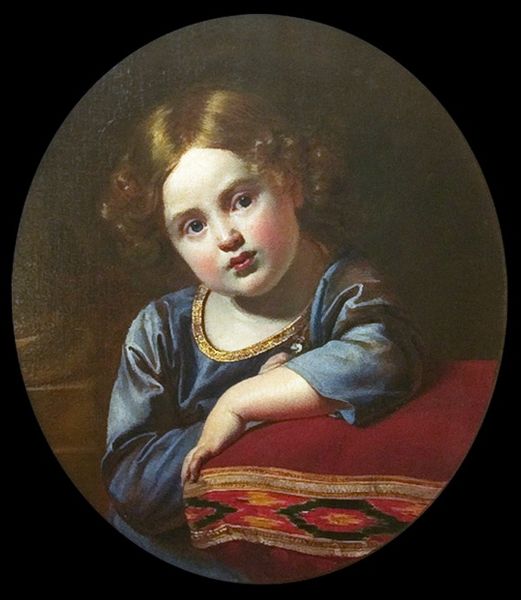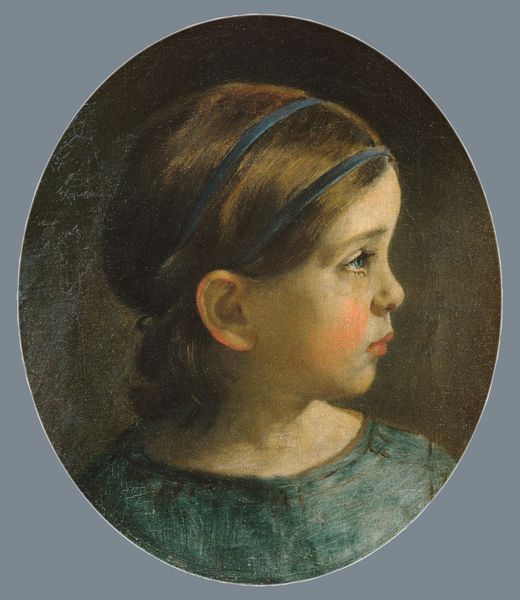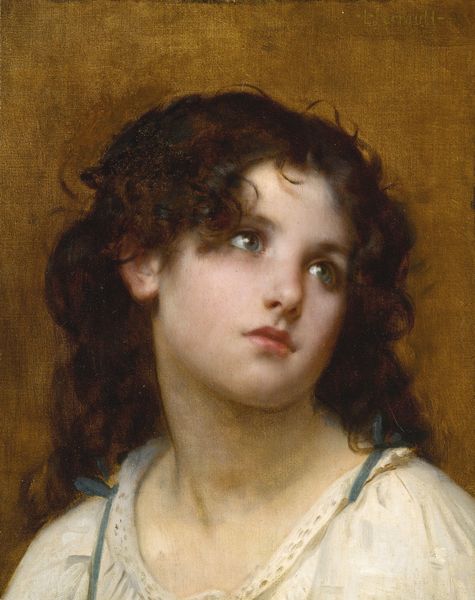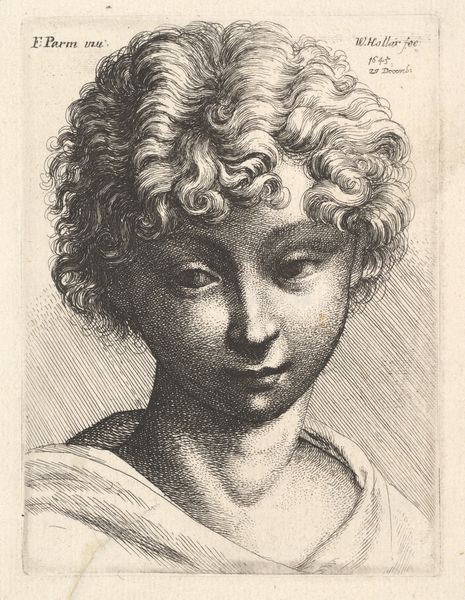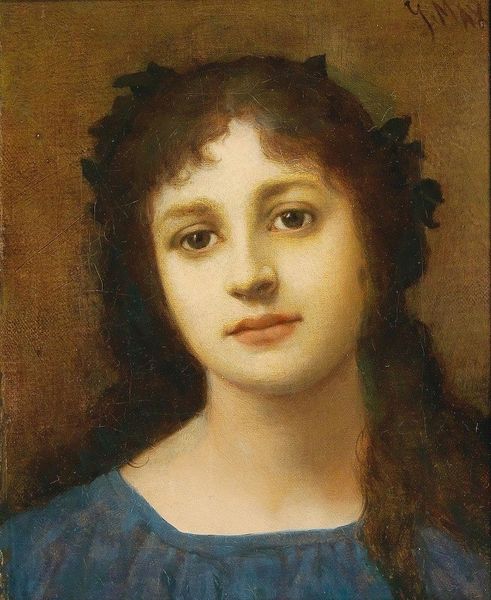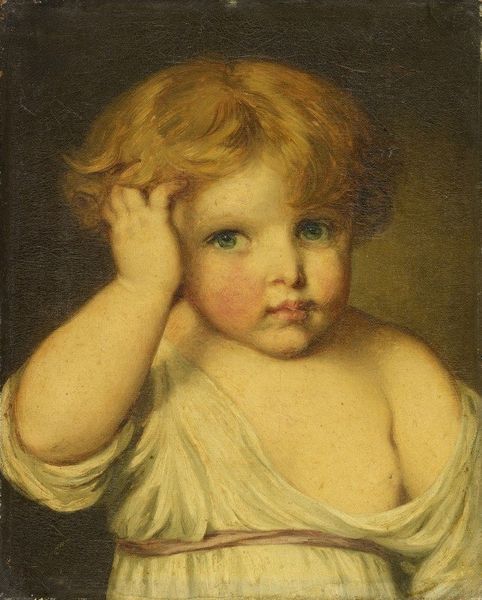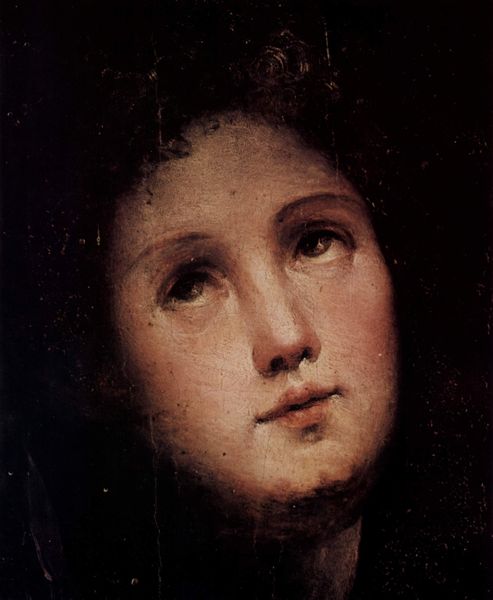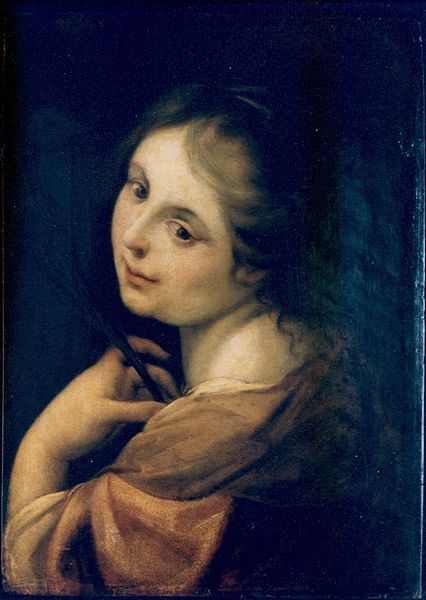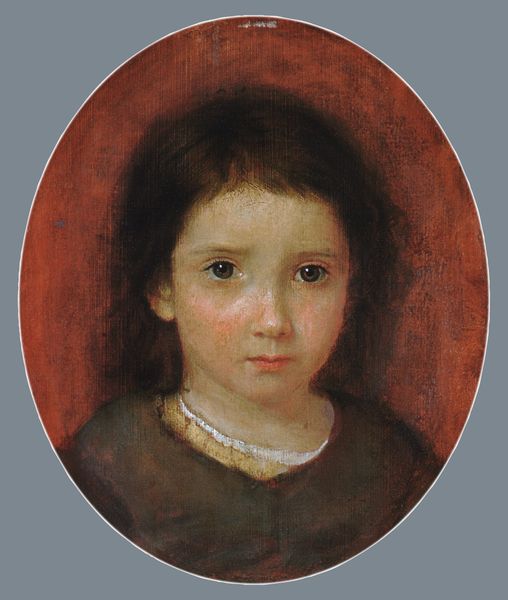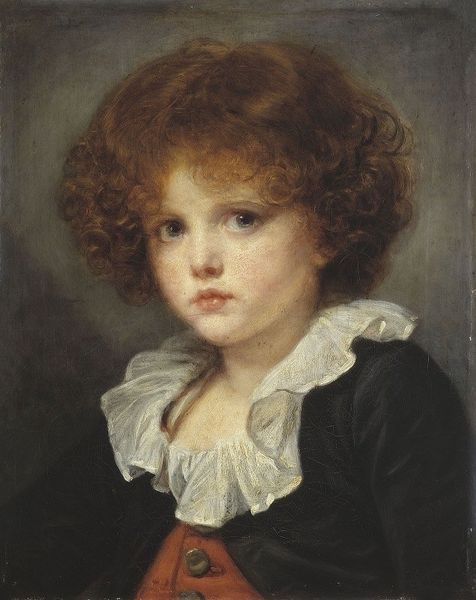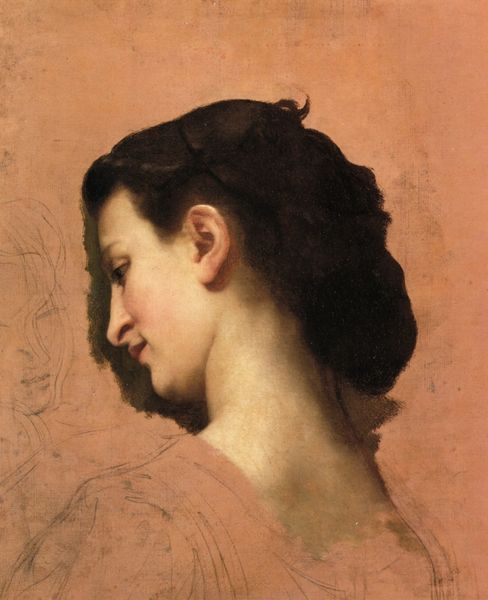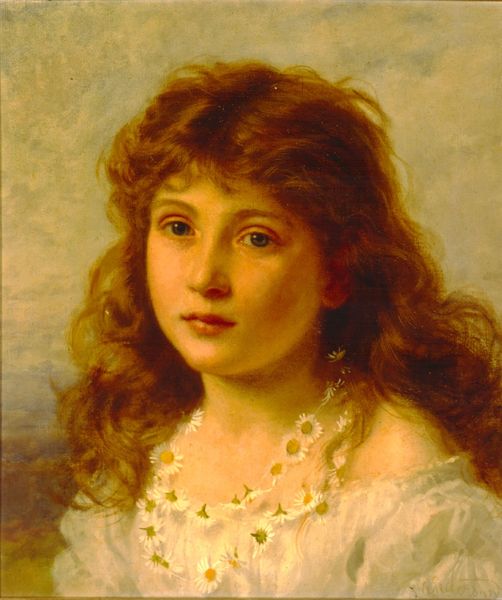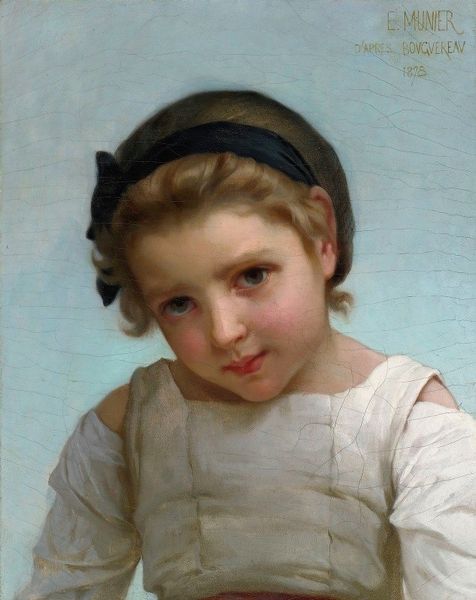
painting, oil-paint
#
portrait
#
painting
#
oil-paint
#
figuration
#
romanticism
#
academic-art
Copyright: Public domain
Curator: What a somber face. The subdued color palette really draws your eye to the young boy’s melancholic gaze. Editor: Yes, let’s talk about Jean-Léon Gérôme’s "Portrait of a Young Boy". Painted in oil, we see academic and romantic elements at play in this figural composition. How do you interpret this handling of materials and its reflection of artistic conventions of its time? Curator: Well, it's striking how Gérôme employed oil paint to almost sculpt the boy’s features. The visible brushstrokes contribute to the work's textured surface. This wasn’t just about representation; it’s about exploring the potentials of oil paint as a medium. Editor: Agreed. This meticulous application aligns with the academic traditions he adhered to, right? Yet, isn't there also a kind of romanticism in the subject’s downcast expression, typical of 19th century portraiture that elevated emotion and individualism, feeding a culture valuing sentimentality? Curator: Absolutely! Look at how the classical drapery is rendered, the folds creating this almost tactile quality, the quality of its material. This careful articulation would be important within academic standards and practices. And considering how paintings were commissioned by and displayed for an increasingly affluent and consuming middle class... there's this interplay between labor, material, and market value that interests me. Editor: That’s key. We see how the consumption of such idealized imagery reinforced social hierarchies, with its value stemming from display, taste and refined sensibility. Who could have owned such a portrait, and what political and cultural power did such possession reinforce? Curator: Interesting questions! Gérôme has captured this young boy with a particular expression. But whether it suggests youthful angst or simply a fleeting moment, it's clear he’s trying to impart more than just physical likeness. The painting engages in constructing narratives of idealized youth within existing institutions and power structures of the period. Editor: So, the work becomes more than just aesthetic. We're drawn to how it was received, debated, and circulated, all shaped by an established art world… a world that certainly privileged particular perspectives. Curator: Precisely. Considering his artistic practices and how paintings like this circulated provides insight into larger economic forces in the nineteenth century. Editor: Indeed, and the painting becomes a mirror, reflecting the values of the societies that both produce and gaze upon them.
Comments
No comments
Be the first to comment and join the conversation on the ultimate creative platform.
